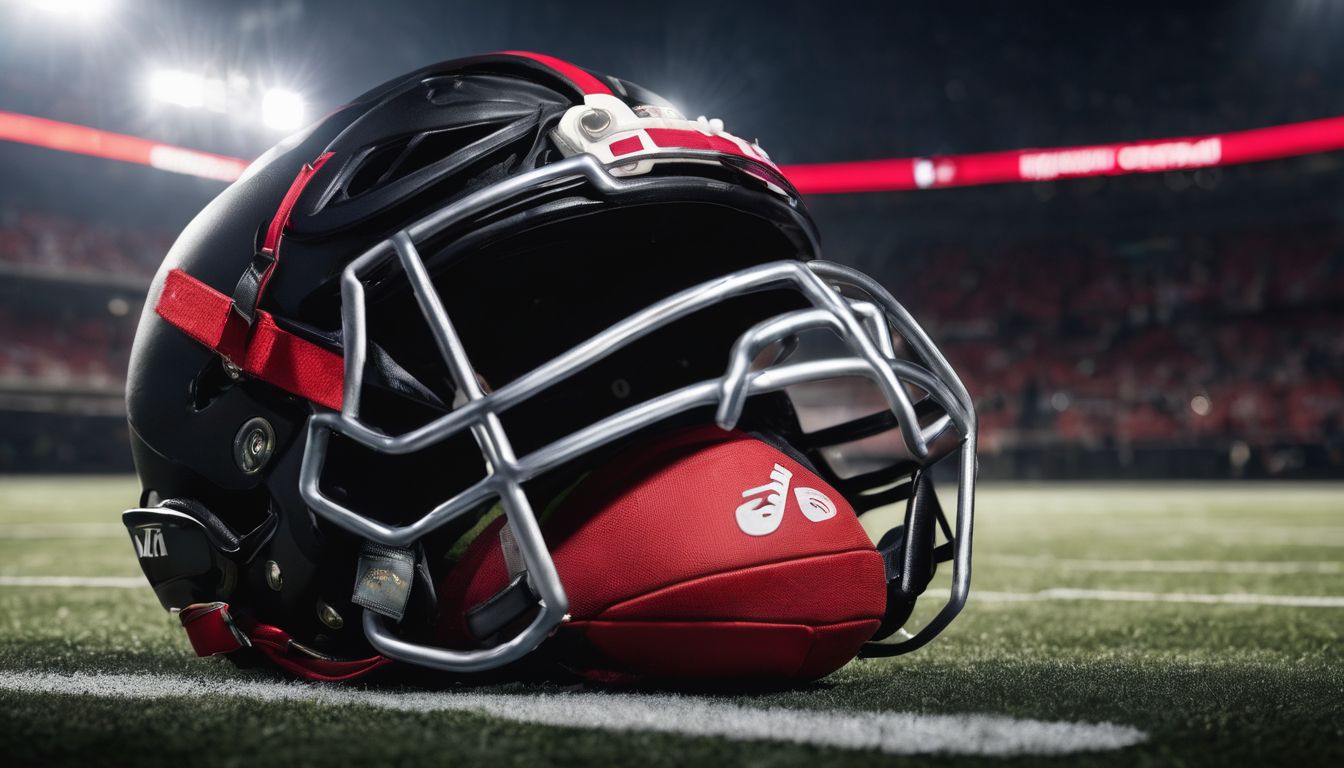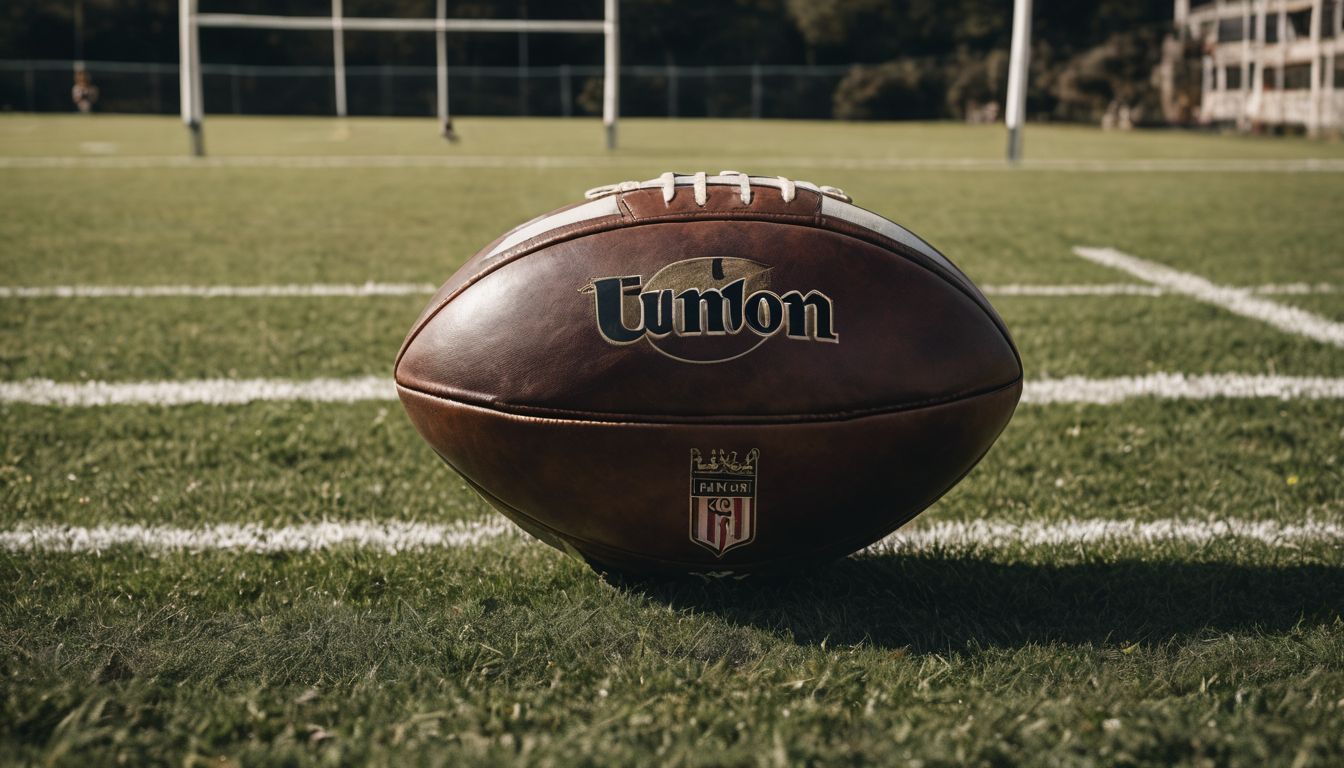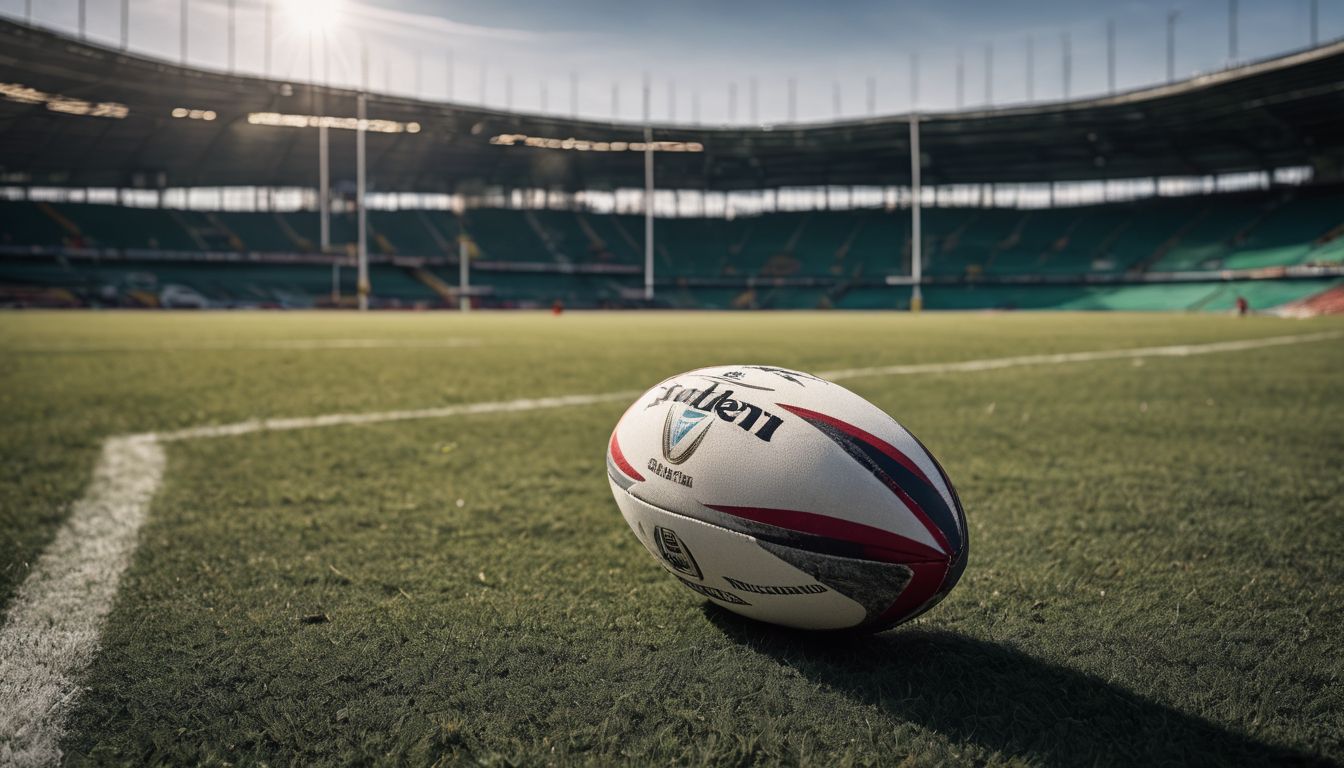Head injuries in rugby are a growing concern for players and fans alike. With concussion rates on the rise, it’s crucial to understand how the sport manages such risks. Our article breaks down the established concussion protocol that safeguards player welfare from grassroots to elite levels.
Keep reading to learn how rugby tackles this serious issue head-on.
Key Takeaways
- Rugby manages concussions with immediate removal from play and a step-by-step recovery process known as the Graduated Return to Play (GRTP).
- Player safety protocols require those suspected of having a concussion to be assessed by medical staff and not return until fully cleared.
- World Rugby’s “Recognise, Remove, Refer, Recover” framework ensures quick identification and appropriate management of head injuries in the sport.
- Concussion symptoms like headaches, dizziness, confusion must be monitored for safely guiding players back into the game after injury.
- Persistent signs such as continuous headaches or memory problems after a concussion need careful observation for full recovery before playing again.
Understanding Concussions in Rugby
Concussions are a common concern in rugby, with the potential for long-term effects if not managed properly. It’s important to recognise the signs and symptoms and understand the impact they can have on players’ health.
Definition of concussion
A concussion is a type of brain injury that occurs when a blow or jolt to the head disrupts normal brain function. This can happen in rugby from hard tackles, collisions, or even accidental contact during play.
The effects are usually temporary but can include headaches, confusion, dizziness, and memory disturbances. While most players recover fully with proper rest and medical care, it’s critical to handle these injuries correctly to avoid serious complications.
Recognising the signs and moving swiftly to assess any player who might have sustained such an injury is vital for their health and well-being. It paves the way for effective management of concussions in rugby—a topic we’ll explore further in the next section on how prevalent this issue is within the sport.
Prevalence in rugby
Having understood the definition of concussion, it is important to recognise its prevalence in rugby. The incidence rate for concussion in rugby has ranged from 0.1 to 8.3 per.. Rugby-related concussions constituted approximately 25% of all injuries reported in Premiership Rugby matches during the 2015-16 season, making it the most commonly reported match injury during that time.
Additionally, among overall rugby injuries, the proportion classified as concussion varied from 1% to 22%. These statistics highlight the significant impact and prevalence of concussions within the sport.
The high prevalence of concussions in rugby underscores the importance of implementing effective protocols for their management and prevention. It becomes imperative for players, coaches, and medical staff to be well-informed about concussion symptoms and follow appropriate guidelines to ensure player safety on and off the field.
Signs and symptoms
The prevalence of concussions in rugby is a serious concern. Recognising the signs and symptoms of a concussion is crucial for player safety:
- Headache: Players may experience persistent or worsening headaches after a head injury, which could indicate a concussion.
- Dizziness and balance problems: Difficulty maintaining balance or feeling unsteady when trying to walk are common symptoms.
- Nausea and vomiting: These can occur immediately after the injury or several hours later, signalling a potential concussion.
- Sensitivity to light or noise: Experiencing discomfort with bright lights or loud sounds is an indicator of a possible concussion.
- Confusion and memory problems: Players may have difficulty concentrating, feel disoriented, or have trouble recalling events surrounding the injury.
Potential long-term effects
Potential long-term effects of concussions in rugby can be serious, including cognitive impairment and an increased risk of developing degenerative brain diseases. Research shows that repeated concussions may lead to chronic traumatic encephalopathy (CTE), a progressive degenerative disease found in individuals with a history of repetitive brain trauma.
Additionally, there is evidence linking concussions to an increased risk of depression, anxiety, and other mental health issues later in life.
It’s important for rugby players and fans to understand the potential long-term consequences of concussions as it highlights the significance of implementing effective concussion protocols and prioritising player safety on and off the field.
The Importance of a Concussion Protocol
It is crucial to have a concussion protocol in place to protect player safety, prevent further injury, and ensure that best practices are followed. Read on to understand the significance of concussion management in rugby.
Protecting player safety
Concussion protocols in rugby are crucial for safeguarding player safety. World Rugby mandates a comprehensive approach to concussion management, emphasising the “Recognise, Remove, Refer, Recover” framework.
This strategy ensures immediate identification of potential head injuries on the field and subsequent removal of affected players from play for thorough evaluation. It aims to prevent further harm while taking into account the long-term well-being of athletes.
Additionally, the implementation of strict concussion guidelines is fundamental in reducing the risk associated with sports-related head trauma.
Rugby organisations have embraced standardised protocols such as World Rugby’s Concussion Return to Play Protocol and IRFU Graduated Return To Play (GRTP) protocol to facilitate safe return-to-play procedures following concussions.
Preventing further injury
After a suspected concussion, preventing further injury is crucial to the player’s recovery. Immediate removal from play helps avoid exacerbating the injury. This step also safeguards against potential long-term effects of concussions commonly seen in rugby players.
Ensuring that the player is assessed and monitored for persistent symptoms contributes significantly to preventing further injury. It allows for an accurate understanding of the severity of the concussion and aids in tailoring an effective treatment plan.
Additionally, informing match officials about any suspected head injuries enables them to monitor gameplay closely and intervene if necessary, providing another layer of protection for players.
Following best practices
Rugby organisations across the globe are committed to implementing best practices for concussion management. World Rugby’s “Recognise and Remove” initiative emphasises the importance of promptly identifying and removing players with suspected concussions from play, prioritising their safety above all else.
The six-stage Graduated Return to Play (GRTP) protocol ensures a carefully supervised rehabilitation process, providing a structured framework for players’ safe return to the game after sustaining head injuries.
This approach aligns with efforts to protect player safety and prevent long-term consequences associated with concussions in rugby.
The IRFU Concussion Guidelines promote an athlete-centred model for concussion education, emphasising informed decision-making regarding player welfare. These guidelines form part of a comprehensive strategy aimed at reducing the incidence rate of concussions in rugby while promoting safe sports practice among youth athletes.
Protocols for Suspected Concussions
Immediately remove any player suspected of having a concussion from play, assess their condition following the appropriate guidelines, and inform match officials of the situation.
Immediate removal from play
When a player is suspected of having a concussion during a rugby match, they must be immediately removed from play. This swift action is crucial to protect the player’s safety and prevent further injury.
World Rugby regulations mandate this precautionary measure to minimise the risk of exacerbating the concussion and ensure proper assessment by medical professionals on the sidelines.
The “Recognise” step in Rugby Ohio’s 5 Rs of concussion awareness underscores the importance of immediate removal from play, emphasising that any suspicion of a head injury warrants prompt action.
Assessing the player
Once a player is suspected of having a concussion, immediate removal from play is crucial. The player should then be assessed by qualified medical personnel to determine the severity of the injury.
This assessment involves evaluating the player’s symptoms, cognitive function, balance, and coordination. Informing match officials about the suspected concussion is also an essential step in ensuring the player’s safety.
Following these steps helps in protecting players’ well-being and preventing further injury. It ensures that those who have suffered a head injury receive appropriate care and do not return to play until they have fully recovered.
Informing match officials
Match officials must be promptly informed when a player is suspected of sustaining a concussion. This ensures that the player can be immediately removed from play and assessed by medical personnel.
By promptly informing match officials, the safety of the player is prioritised, preventing further injury and facilitating proper medical evaluation. It is crucial for match officials to be aware of the signs and symptoms of concussions to take swift action in protecting the players’ well-being.
Concussion incidents should be taken seriously at all levels of rugby, and informing match officials plays a vital role in enforcing safety protocols for players. The World Rugby Concussion Guidance document provides valuable information to guide all those involved in managing potential concussions during gameplay, emphasising the importance of immediate action in responding to suspected head injuries on the field.
Graduated Return to Play (GRTP)
The GRTP is a six-stage rehabilitation process that allows players to gradually return to playing rugby after a concussion. It involves collaboration with the player and their support system to ensure a safe and successful return to play.
Six-stage rehabilitation process
- Complete Rest: The initial stage requires the player to refrain from any physical or cognitive activity, allowing the brain to heal.
- Light Aerobic Exercise: Once cleared by medical professionals, the player can engage in light aerobic activities such as walking or stationary cycling.
- Sport-Specific Exercise: At this stage, the player can start practising sport-specific drills under supervision to assess their tolerance for more complex movements.
- Non-Contact Training Drills: The player can then progress to non-contact training drills, focusing on skills and coordination without the risk of physical contact.
- Full Contact Practice: After successful completion of previous stages, the player can participate in full-contact training, gradually reintroducing physicality under controlled conditions.
- Return to Play: Finally, the medical team will conduct a comprehensive evaluation before approving the player’s return to competitive play.
Collaboration with player and support system
To ensure a successful return to play following a concussion, collaboration between the player and their support system is crucial. The GRTP protocol involves regular communication with the player, medical staff, and coaches to monitor progress throughout each stage of rehabilitation.
It is essential for the player’s support system to understand the importance of closely following medical advice and providing a conducive environment for recovery. Open dialogue and adherence to the prescribed rest periods are vital components of this collaborative approach, ensuring that the player receives comprehensive support throughout their recovery journey.
Furthermore, involving family members, teammates, and other relevant parties in understanding the concussion protocol helps create a cohesive support network around the affected athlete.
This collective effort enhances awareness about potential risks associated with concussions while also fostering an environment where safety remains paramount in rugby participation.
Post-Concussion Management
After a concussion, the player must rest and gradually return to normal activities. It’s important to monitor for persistent symptoms and seek medical attention if needed.
Rest and gradual return to normal activities
After a concussion, it’s crucial for the player to rest and gradually return to normal activities. Here’s what rugby fans should know about this process:
- Immediate rest: After a concussion, the player should rest physically and mentally to allow the brain to heal. This includes avoiding physical activity, screen time, and mentally taxing tasks.
- Gradual reintroduction of activities: As symptoms improve, the player can slowly reintroduce light physical and mental activities. This may include short walks or light stretching exercises.
- Monitoring symptoms: Throughout the return-to-play process, it’s important to monitor for any re-emergence or worsening of symptoms. If symptoms return, the activity level should be reduced.
- Guidance from healthcare professionals: The player should receive guidance from healthcare professionals on when it’s safe to progress to more intense physical and mental activities.
- Full clearance before resuming play: Before returning to rugby activities, the player must receive full clearance from a healthcare professional following an assessment of their readiness.
Monitoring for persistent symptoms
Players must be closely monitored for persistent symptoms following a concussion. It is crucial to watch for ongoing signs such as headaches, dizziness, memory problems, and difficulty concentrating.
Additionally, emotional changes like irritability or anxiety should also be observed. These persistent symptoms may indicate that the brain has not fully recovered from the injury and could prolong the player’s return to play.
After a concussion, it is important for players to be supported in reporting any lingering symptoms so that they can receive appropriate care and allow their brains adequate time to heal.
Conclusion
In conclusion, the concussion protocol in rugby is crucial for protecting player safety. It involves immediate removal from play and thorough assessment of suspected concussions to prevent further injury.
The Graduated Return to Play (GRTP) process ensures a safe rehabilitation back into the game. Post-concussion management focuses on rest and gradual return to normal activities while monitoring for persistent symptoms.
FAQs
1. What is the concussion protocol in rugby?
The concussion protocol in rugby includes guidelines for spotting head injuries, assessing players on the pitch, and providing them with recovery plans and treatment to ensure their safety.
2. How do they assess a player for a concussion during a rugby match?
If a player suffers potential sports-related head trauma, they undergo a rugby concussion assessment involving immediate medical evaluation by trained professionals as per the sport’s safety protocols.
3. Are there special steps taken to prevent concussions in youth sports like rugby?
Yes, prevention measures are key parts of athlete safety, especially in youth sports where education about proper playing techniques and wearing protective gear is vital to minimise sports injury risks.
4. What happens if a player gets diagnosed with a concussion in Rugby?
When diagnosed with a concussion, the player follows the sport’s injury rehabilitation process which may include rest from play, tailored recovery programmes and ongoing assessments until full health is restored.
5. Why is it important to educate athletes on concussions?
Concussion education helps athletes understand the importance of reporting symptoms immediately ensuring prompt treatment can begin which protects their long-term health and well-being.
















